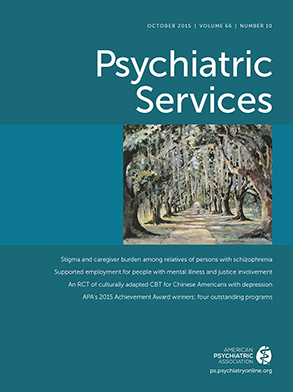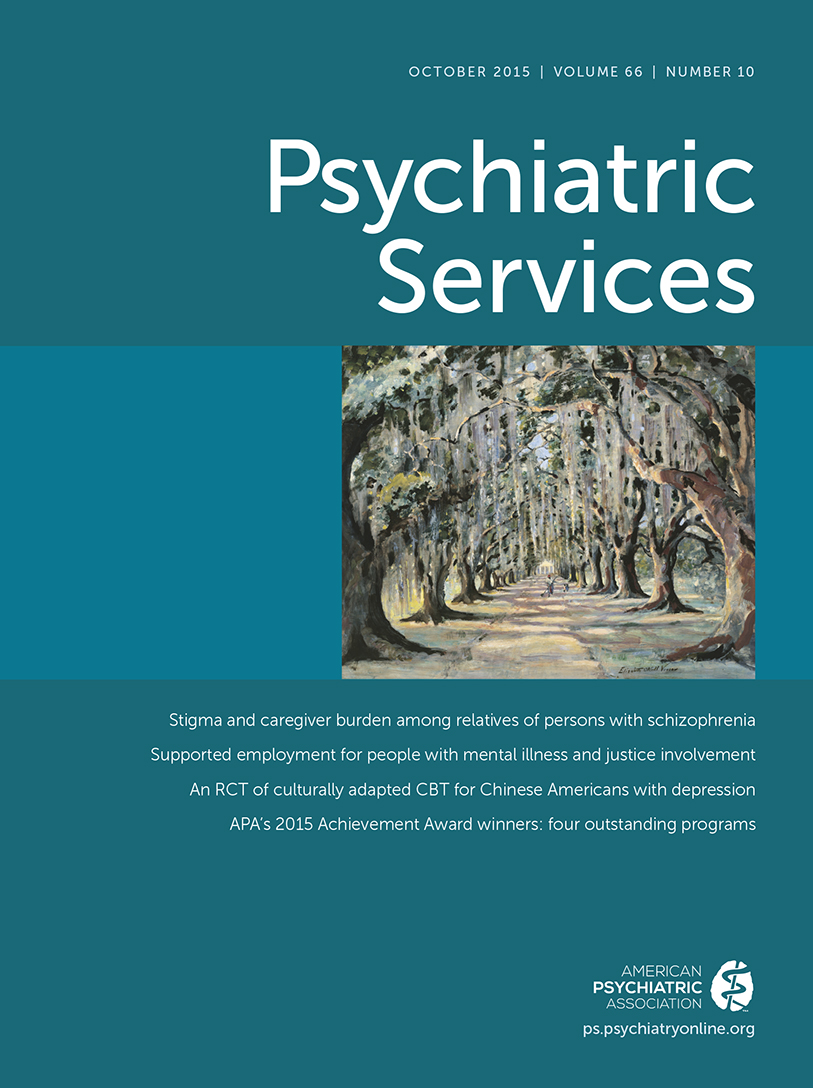TO THE EDITOR: The October 2014 issue of
Psychiatric Services included a report of a study by McFarlane and colleagues (
1) in which they tested the ability of a community intervention (the Portland Identification and Early Referral [PIER] program) to prevent hospitalization for psychosis of individuals identified as being at clinically high risk of psychosis. They used an autoregressive integrated moving-average (ARIMA) time-series analysis (
2), comparing the monthly (28-day months) rate of hospitalizations in the Greater Portland area before the PIER program began with the monthly rate while the PIER program was operating. Among the findings reported was the following: “Hospitalizations dropped by 2.82 (CI=–4.01 to –1.63) per 28-day month in the Greater Portland area after the PIER intervention. This 26% reduction translates into 189 fewer hospitalizations during the 332 weeks of the PIER intervention, or 29.7 admissions per year.”
Perhaps the finding of 189 fewer hospitalizations was arrived at by some method not described in the published report. At a rate of 2.82 per month for 83 months (332 weeks divided by 4), the number of hospitalizations prevented is 234, not 189. If 234 hospital admissions were prevented over 6.38 (13-month) years, the average annual rate was 36.7, not 29.7 as reported. This is considerably more than the average annual enrollment rate for the program, which was about 23.
How many hospitalizations could plausibly be prevented given the sample and interventions involved? A total of 139 youths at clinically high risk of psychosis and their families were enrolled in the PIER program. Of these, 39 were in a pilot study group and received an early version of the experimental treatment. The remaining 100 were in a randomized experiment that showed no statistically significant difference between the effectiveness of “a specially adapted version of Family-aided Assertive Community Treatment (FACT)” (
3) and “an attenuated version of FACT” that was less intensive and less expensive. Moreover, fewer than 56 of the 139 high-risk individuals (40%) should be expected to develop psychosis (
4), much less be hospitalized for it. The authors speculate that the hospitalizations of 79 additional individuals who were already experiencing a first episode of psychosis at first contact were also prevented by the PIER program. These 79 individuals were not treated by the PIER program; they were referred to other clinics for treatment. Most of these individuals were given a diagnosis via a telephone screening procedure of unknown reliability. We do not know how many followed through with the referral to other clinics or how many were subsequently hospitalized. Even if we count all 56 high-risk individuals who could have developed psychosis and all 79 individuals referred to other clinics in the total number of hospitalizations prevented, the sum is 135 hospitalizations prevented, which is considerably less than the reported reduction of 189 and the mathematically derived 234.
That the PIER program could have prevented more hospitalizations than the number of individuals who were either treated or referred elsewhere is, in my opinion, implausible. It suggests that either some factor coincidental to the PIER program influenced the hospitalization rate or the methodological procedures were flawed. The article reports little useful information about the ARIMA model the authors chose, not even the sizes of the regression coefficient and test statistic for the intervention effect. Furthermore, the argument that the PIER program was responsible for preventing all these hospitalizations implies that early phone screening and referral and a fairly minimal intervention are highly effective strategies for preventing hospitalizations for first-episode psychosis. If the authors’ analysis is correct, implementation of the FACT model does not seem necessary for the prevention of such hospitalizations, and thus its additional cost is unjustified.

